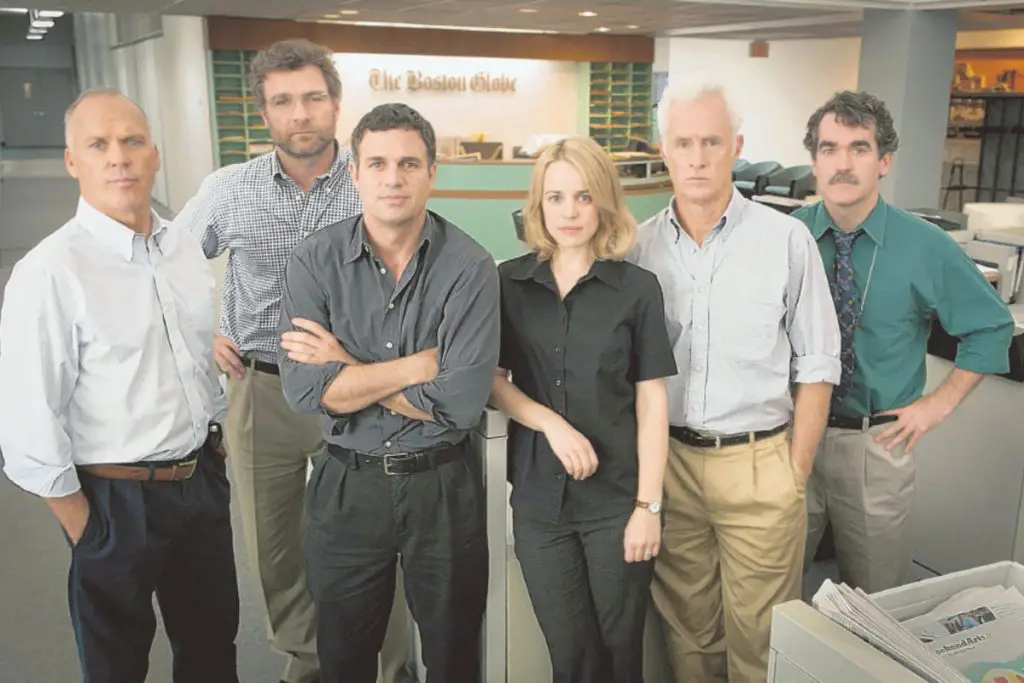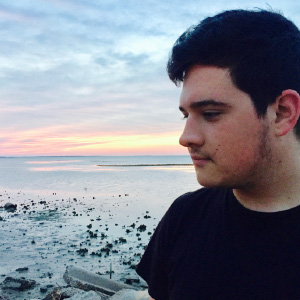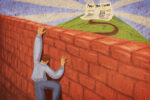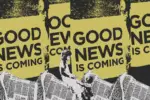There has never been a better or worse time to be a journalist.
Some great investigative reporting has happened in the last decade, as the political climate has become noticeably more intense since the start of the 2016 presidential campaign. Major news networks are increasingly scrutinized, and that scrutiny, which purports all journalists to be inherently defamatory, is unfortunately affecting reporters participating in ethical journalism, too.
If there is anything positive coming from the loaded gun pointed at journalists’ heads, it that the pressure has forced the standard of journalism to rise. As a result, reporters have gone back to basics: account for the environment that produces events, and update accordingly.
I got my foundation working in my hometown’s newspaper when I was in high school, before later joining an independent student publication in college. Besides the normal combing of newspapers, I read a lot of book-length investigative reporting. So, I’m recommending the following nonfiction books, all of which helped me understand why an occupation in journalism was worth pursuing.
Though these reports deal with different subjects, they all share the blend of storytelling’s fluidity and news writing’s technical prose that make investigative journalism a writing style of its own. Whether you read one or all, you’ll get a sense of investigative reporting’s writing structure and how it seamlessly ties several ends of a story together. If you don’t have time to read the whole book, you can check out this Blinkist review where you’ll be able to find reviews on books.
These books will not teach you how to be a journalist — there are more technical books for that — but if you want to learn how to be a reporter, you must cover stories. In order to do that, you need investigative interests and it starts with reading the stories that can’t be covered in two-hundred-word sidebar articles. The following selections might cement your investigative interests forever. At the very least, you will see how journalism can change, or expose, social and political cultures.
1. “In Cold Blood” by Truman Capote
Truman Capote’s “In Cold Blood” is arguably the first book-length investigative report, so much so that including the book on this list seems cliché. But this work is an outlier: Capote wasn’t a journalist, and the work is more fictionalized in its structure than the other books on this list. The odd structure of the text works, though, as its style enhances the reader’s understanding of the events by portraying the emotions and personalities of everyone involved.
The book investigates the Clutter family murders, where two ex-cons, attempting to rob the family’s apparent wealth, mentioned by a fellow inmate who worked for the Clutters, killed all four members with direct shotgun blasts to the face.
Capote and Harper Lee (yes, that Harper Lee) went to Holcomb, Kansas, where the murder occurred, and interviewed its citizens, criminal investigators and the killers themselves, Richard “Dick” Hickock and Perry Smith. Capote includes meticulous detail layered through clear writing, making the complicated relationship between the killers, the investigators’ difficulties with the case and the terror that the murders brought over Holcomb accessible and an overall more compelling story. You don’t have to take my word for it, either: Check out tons of book reviews here.
I hate using the word, but the book is inspiring. “In Cold Blood” was Capote’s first serious journalistic endeavor, and one he only set upon after discovering the small New York Times article on the murders and deciding the story was worth expanding. Capote seemed to have a civic duty to write on the Clutter murders, creating a model that journalists now embrace as a facet of their modus operandi: finding the story within the story.
2. “Betrayal” by staff of “The Boston Globe”
Based on the reporting of Boston Globe staff members Matt Carroll, Kevin Cullen, Thomas Farragher, Stephen Kurkjian, Michael Paulson, Sacha Pfeiffer, Michael Rezendes and Walter V Robinson, “Betrayal” is the 2002 report of rampant pedophilia in Boston Catholic churches dating back to the ‘70s and onward. Over 600 stories followed the initial uncovering, revealing a worldwide epidemic of pedophilia in Catholic churches.

Packed with the names of priests, their victims, the churches they worked in, their lawyers and the criminal investigators that tried to bring them down, the book demands careful reading. Even with the dizzying amount of information it reveals, “Betrayal” shows readers how difficult the reporters had to work to find the facts.
Some priests they interviewed outright admitted their abuse of children, but their lawyers and administrators created elaborate cover-ups, moving the church figures from parish to parish after each report of abuse. Victims were silenced with undisclosed settlements, documents on the abuses were hidden away and the idea of sexually deviant priests wasn’t believed by the general public. Some of these priests were so beloved by families, they had their own rooms in their homes.
“Betrayal” also delves into why pedophilia in Catholic churches exists on a global scale, rather than being a series of isolated cases that church leaders purported it to be. The cover-ups at the Boston dioceses weren’t unique, either, and it’s clear that Catholic church leaders knew they would never recover from the scandal’s reveal and did everything to conceal it.
Boston, and the entire state of Massachusetts, are predominantly Catholic, and challenging the church was culturally unthinkable. The Boston Globe’s persistence attests to journalists’ duty to report the truth, even if it’s inconvenient.
3. “Fear and Loathing: On the Campaign Trail ’72” by Hunter S. Thompson
Hunter S. Thompson’s works were my introduction to journalism before I considered pursuing it, and I was immediately attracted to the “gonzo” journalism style he created, where the journalist is involved in the story they’re covering; I immediately thought it should be the only way anyone should report anything. Of course, I don’t believe that anymore, and I suggest you don’t adopt the style, as it’s become clichéd by writers who can’t replicate Thompson’s voice.
However, there is plenty you can learn from “Fear and Loathing: On the Campaign Trail ’72” or, “the one that’s not about Las Vegas.” The book is all of Thompson’s reporting on the 1972 presidential campaign for the “Rolling Stone,” and the coverage is extensive.
Thompson goes into neurotic detail on every rally, caucus, candidate, staff member and even the election itself. The reporting is completely unconventional, but I think that’s where his genius lies. It’s not the players that matter, just the process, the thinking, the insanity of American politics. Anyone can read this book and get a better understanding of the 1972 presidential campaign, but a journalist sees how similar it is to contemporary American political coverage, and what they should pay attention to, should they ever pursue reporting it.
Read this book knowing that it’s embellished, that it is unconcerned with candidate platforms. “Fear and Loathing: On the Campaign Trail ‘72” concerns the act of coverage first, and the details of the campaign second. A reader can get a sense of the journalist’s inner monologue: The thoughts they can’t put to print, and the humanity that objective reporting has no room for.
Thompson didn’t give a damn about hiding his thoughts, and reading his frustrations with covering the campaign, his hatred for Richard Nixon and his burnout after the election’s end shows how aggravating being a journalist can be. Not from the writing, and not from the deadlines, but keeping it together long enough to document the most chaotic facets of society.
4. “Underground: The Tokyo Gas Attack and the Japanese Psyche” by Haruki Murakami
In 1995, members of “Aum Shinrikyo,” a Japanese doomsday cult, released sarin, a poisonous gas twenty-six times deadlier than cyanide, into the subway lines of Tokyo, Japan. Thirteen people were killed, and thousands more were injured. The five attackers were all accomplished academics of life sciences. All were apprehended, then sent to life in prison or executed by hanging.
“Underground” is a collection of survivor interviews conducted by Haruki Murakami. There are sixty interviewees who agreed to be interviewed, out of the one hundred forty people Murakami contacted. The author also interviews former and current members of “Aub Shinrikyo,” none of whom had direct involvement in the attack, in the second part of the book. Interviews from both parties are printed exactly as they were conducted, and I’ve yet to read purer, more casual interviews.
Like Capote, Murakami isn’t a journalist. Also like Capote, Murakami was inspired to write the book after reading an article about the event. Though he’s an incredibly accomplished author, and one of my personal favorites, I approached the book warily. I wondered if Murakami could escape the incredibly elaborate worlds he creates in his fiction and investigate the real world. But Murakami’s approach to the story was clear and direct: to understand who the victims of the attack were, and I believe he was more successful than he realizes. The victim’s testimonies revealed facets of the notoriously shy Japanese consciousness.
I believe Americans have become so accustomed to terrorism’s effects on society that they don’t remember what it’s like to not be in fear. Reading the perspectives of Japanese people who now face this fear, and unsure how it will impact their lives, I’d be hard-pressed to find a reader who doesn’t reflect on their own society and ask these difficult questions.
I’m intentionally being vague on the contents of the book. Like his fiction, the substance of this book is difficult to explain in detail; it must be read. If anything can be taken from this book, it’s that a journalist with a clear direction will be successful, even if the result is unexpected.

















